There are really five things that an avoidant will do that’ll make no sense to you.
And today I’m going to attempt to shed some light on this seemingly bizarre and confusing behavior starting with,
Door #1: How Quickly They Can Move On From You
Alright imagine this,
You’ve been dating an avoidant for a few years now. You’ve poured everything into the relationship and then one day your worst fear comes true. They break up with you.
It’s sudden. Unexplained.
And you’re left feeling shattered. You question everything. You replay every moment in your mind, trying to find clues or signs you might have missed. You feel like the ground has been pulled out from under you.
And then something even worse happens.
Mere days after the breakup, you discover that they’ve already moved on to someone else. It’s a gut-wrenching blow, the ultimate betrayal. The pain of the breakup is magnified as you grapple with the realization that they’ve replaced you so quickly. You start to question whether the years you poured into the relationship meant anything at all. It feels like everything you shared, every moment, every effort, was for nothing.
For most people who are in a long committed relationship, an avoidant doing this makes absolutely no sense.
Yet, for an avoidant it actually makes all the sense in the world.
This is my world famous Avoidant Death Wheel,
As you can see here, there are eight stages to it. The ones that pertain to us are these stages right here, Stages 7 and 8.
You see, that’s where an avoidant starts to feel the breakup.
But they don’t want to feel the breakup. It’s literally in their name—they want to avoid it.
So, instead of processing the pain, the loss, or even reflecting on what went wrong, they move on to someone else as a way to sidestep those difficult emotions.
Basically they’re skipping Stages 7 and 8 and starting a new revolution around the wheel with someone new back on Stage 1.

What Are Your Chances of Getting Your Ex Boyfriend Back?
Take the quizBy jumping into a new relationship, they’re able to distract themselves and keep those feelings of vulnerability, sadness, and regret at bay. To them, it’s a way to regain control, to avoid the discomfort of introspection and emotional turmoil.
Moving on quickly becomes a coping mechanism, allowing them to bypass the emotional fallout and, in their minds, protect themselves from the very pain they fear most. What might seem like a cold, heartless move to you is, in reality, their way of avoiding the depths of heartbreak they’re ill-equipped to handle.
And oddly enough, this creates a strange paradox.
In their attempt to protect themselves from the pain of the breakup they inadvertently set the stage for the very outcome they fear most.
Here’s how it works:
- By not confronting their emotions or the reasons for the breakup, they never truly resolve their feelings.
- This lack of resolution means that their next relationship is built on shaky ground, often carrying the unresolved baggage from the previous one.
- The new relationship may start as a distraction, but it eventually faces the same issues—emotional distance, unexpressed boundaries, and the fear of closeness.
- These unresolved issues then lead to more conflict, more misunderstandings, and eventually, another breakup.
But here’s the part that gets me.
Now, this is completely my theory and I don’t have any proof to back it up yet, but I think most dismissive avoidants aren’t even aware of this dynamic, or able to understand their behavior around it, because it’s outside conscious awareness.
But more on that in a moment.
For now let’s take a peek and see what’s behind Door #2:
Door #2: The Unspoken Agenda:
Imagine you’re in a relationship with someone who seems to have an unspoken rulebook—a set of decisions and actions that are never communicated, but somehow always in play.
This is what it’s like being with an avoidant when they engage in what I call “The Unspoken Agenda.”
Alright, so it works like this:
- Avoidants often make decisions silently, operating under the belief that by not discussing their desires, boundaries, or concerns, they can avoid potential conflict.
- They choose to stay silent about plans they don’t agree with, preferences they don’t share, or boundaries they don’t set—all in an effort to keep the peace.
- To them, this makes perfect sense. Why risk an argument when you can just quietly steer the ship in the direction you think will avoid the storm?
But eventually it backfires.
- The avoidant’s partner is left in the dark, constantly trying to navigate a relationship without a map.
- The avoidant’s unspoken decisions lead to confusion, misunderstandings, and eventually, hurt feelings.
- Their partner may feel excluded, mistrusted, or even deceived when they discover that important decisions were made without their input or knowledge.
- The avoidant’s attempt to avoid conflict by keeping things unspoken ironically creates the very conflict they were trying to avoid.
Once again, we’re seeing that weird irony pop up.
What makes this behavior so puzzling though is that, from the avoidant’s perspective, it’s a logical strategy to protect both themselves and the relationship.
But in reality, it undermines trust, communication, and intimacy—the very foundations of a healthy relationship. The lack of transparency creates a rift, making the partner feel disconnected and unimportant, which only serves to deepen the emotional distance the avoidant was trying to avoid in the first place.
In the end, the unspoken agenda becomes a double-edged sword:
- It shields the avoidant from immediate discomfort
- But it cuts away at the long-term health of the relationship.
It’s one of those behaviors that doesn’t align with what we think of as a loving, open relationship, yet makes all the sense in the world to someone who’s trying to protect themselves from emotional pain.
Let’s move on to Door #3.
Door #3: They Don’t Have The Tools
When I was writing this script I actually stumbled across this reddit comment,

What Are Your Chances of Getting Your Ex Boyfriend Back?
Take the quiz“In my experience as an avoidant, in a long term relationship with an avoidant, having avoidants in my family and friendships… Some people don’t have tools, words even. They cannot communicate boundaries because they don’t know what those are or that they’re even allowed to.”
So, basically the implication here is that avoidant behavior often stems not from a conscious decision to withhold communication, but from a deep-rooted belief that they aren’t allowed to express their needs. This belief likely developed early in life, where expressing needs might have led to ridicule or punishment, teaching them to stay silent.
My interview with Erica Komisar, a licensed clinical social worker, shed light on this. She gives this really interesting analogy about what the caregivers of an avoidant in the early childhood years are supposed to be doing.
“It’s like being on a sailboat in the Atlantic. What mothers do is they bring babies back to the Caribbean. It’s not this because that would be strange and depressed. It’s like this.”
The thing about avoidants though is they’ve never really experience “the Caribbean.” They’ve never been given the tools.
This lack of communication skills likely means they may not even recognize their own boundaries or understand that they have the right to set them.
So, what bizarre behavior do they do that seemingly makes no sense?
Well, because of their lack of tools in navigating choppy waters it leads to withdrawal or shutdowns in relationships—not as a deliberate act of distancing, but because they simply don’t know how to engage in a way that feels safe.
Which of course creates significant misunderstandings.
- Their partners may misinterpret the avoidant’s behavior as indifference or lack of care, when in fact it’s a reflection of their struggle to express themselves.
- The real challenge for avoidants is learning that they do have the right to communicate their needs and discovering how to do so effectively.
- This isn’t just about learning new behaviors but also about unlearning the harmful beliefs that have kept them silent.
Let’s move on to Door #4:
Door #4: They’re Hurt But Don’t Know Why
Let’s stay on the reddit train here for a moment. In that same thread I also stumbled across this comment,
“It often takes a long time for me to process things—sometimes even a year. I’d (FA) feel hurt but wouldn’t know why, by things my now DA ex-boyfriend said or did, or things he didn’t want to do. For example, I’d be the first to offer to drive us on a planned walk or to buy lunch or a pint. Gradually, after 18 months, I realized I should stop offering first, as there was an imbalance that he didn’t seem to notice, but it began to affect me. I felt guilty for stopping doing these things, but at the same time, I felt better about myself.
After something he said or did hurt or puzzled me, I’d quash my inner reaction, telling myself I was being stupid or too sensitive, and I was unable to ask him to explain what he meant or whether I had misunderstood. I brushed many of my unvoiced questions aside—bad mistakes. I didn’t realize I was avoiding; I just felt inadequate.”
So, the implication here with this story is that sometimes an avoidant feels hurt, but they’re not even sure why.
Personally I kind of view this as a build up of everything we’ve talked about before.
Let’s do a quick recap here:
- With Door #2: We learned that avoidants have an unspoken agenda. They keep things to themselves to avoid conflict which creates an unstableness inside.
- With Door #3: We learned that many avoidants don’t even have the tools or words to communicate properly.
The result of those two things put together likely leads to what’s behind Door #4.

What Are Your Chances of Getting Your Ex Boyfriend Back?
Take the quizI mean really think about it for a moment.
When an avoidant experiences a negative emotion, like hurt or frustration, they might not immediately understand the root cause.
So, instead of addressing the emotion head-on, they might push it aside, dismissing it as them being “too sensitive” or “overreacting.”
This lack of immediate clarity often leads to a delay in processing. It can take months—or even years—for them to piece together why they felt hurt by a particular action or comment.
- During this time, the avoidant may continue to suppress their feelings, creating a growing sense of imbalance or discomfort in the relationship.
- They might start pulling back from certain behaviors, like always being the first to offer help or initiate plans, as they gradually recognize that their needs aren’t being met.
However, because they don’t fully understand or communicate their feelings, their partner is left in the dark.
The partner might not realize that their avoidant counterpart is struggling internally, which can lead to further misunderstandings and emotional distance.
This cycle of unprocessed emotions and unspoken concerns only deepens the avoidant’s sense of inadequacy and reinforces their tendency to avoid difficult conversations.
Ultimately, the avoidant might feel like something is wrong, but without the tools to identify or express it, they continue to push down their feelings, creating a quiet but persistent rift in the relationship.
And that leads us to what I consider to be the most important Door.
Door #5: Engaging in “Pseudo-Intimacy”:
A few weeks ago I posted a video entitled: “What Avoidants Hope For When You Go No Contact.”
And in that video I talk a lot about a concept called “The Magicians Outfit.”
Basically it’s this fake persona that an avoidant convinces themselves they need to wear to “fit in.” It’s actually not too dissimilar to the concept of a facade by Carl Jung.
Essentially though the magician’s cloak represents the performative, constructed identity that you feel compelled to wear to gain love and approval. Like Carl Jung’s persona, the magician’s outfit is tailored to meet the expectations of others, at the cost of suppressing your true emotions and needs.
But there’s a sad internal conflict that comes along with wearing it.
It’s exhausting because it requires constant performance, much like how over-reliance on the persona can lead to a sense of inauthenticity. You tend to find that avoidants who wear this cloak often feel trapped in this outfit and long to express their true self.
Alright, so keep all of that in mind as we talk about Pseudo-Intimacy.
First things first though, what is “Pseudo-Intimacy”?
Well, it’s a behavior that avoidants often engage in to maintain their relationships without exposing their true selves.
It involves two layers:
- Engaging in surface-level intimacy—like joking around, sharing trivial information, or participating in lighthearted activities
- While at the same time avoiding deeper emotional connections.
Now, imagine you’re on the receiving end of this. It’s confusing, right?
It can easily be mistaken for genuine closeness, but in reality, the avoidant is still keeping their true feelings and vulnerabilities hidden.
Here’s where it ties back to the Magician’s Outfit:
- Pseudo-Intimacy is essentially part of the magician’s performance.
- It’s the avoidant’s way of maintaining the illusion of connection while keeping their true self safely tucked away beneath the cloak.
- They offer just enough engagement to keep the relationship afloat, but they avoid the deeper conversations and emotional risks that would require them to take off the Magician’s Outfit and reveal their authentic self.
For the avoidant, this might feel like the safest route:
- Staying connected without exposing too much—but it comes at a cost.
- Their partner is left feeling that something is missing, sensing the emotional distance even if they can’t quite put their finger on why.
- Meanwhile, the avoidant continues to feel the strain of wearing the Magician’s Outfit, trapped in a cycle of surface-level interactions that never quite satisfy their deeper need for true connection.
Ultimately, pseudo intimacy, like the Magician’s Outfit, is a defense mechanism. It’s a way to protect themselves from vulnerability and potential rejection, but it also prevents the real, meaningful connection that both partners often long for.
This might also explain why you see so much hot and cold behavior from avoidants.
When they wear the Magician’s Outfit, there are moments where everything seems amazing. They’re fully engaged, charming, and the connection feels real—at least on the surface.
These are the times when the avoidant is fully immersed in the performance, playing the role they believe will keep the relationship safe and maintain the approval and affection of their partner.
But the Magician’s Outfit is heavy, and maintaining the facade is exhausting.
Over time, the avoidant tires of it, or perhaps a small crack appears in the facade. Maybe an emotional moment becomes too intense, or a situation arises that threatens to expose their true feelings. That’s when the coldness starts to leak out.
This shift can be jarring for their partner, who was just experiencing the warmth and closeness of the “hot” phase. The sudden coldness feels like a withdrawal, which it essentially is. The avoidant pulls back, not because they want to hurt their partner, but because they need to retreat behind the cloak to protect themselves.
The effort of maintaining the facade becomes too much, and they feel the need to reset, to regain control over their emotions and the situation.
This hot and cold behavior is a direct result of the avoidant’s struggle to balance the need for connection with their fear of vulnerability
- The warmth represents the moments when the Magician’s Outfit is working. It allows them to connect without feeling too exposed.
- The coldness is the inevitable result of the cracks in the facade, when the emotional strain becomes too great and the avoidant retreats to protect themselves.
For their partner, this push-pull dynamic is incredibly confusing and painful.
It feels like they’re constantly being brought close, only to be pushed away again.
But understanding that this behavior is tied to the avoidant’s need to protect themselves—and their struggle with the exhausting performance of the Magician’s Outfit—can provide some clarity.
It’s not about a lack of care or love; it’s about the avoidant’s internal battle with their own fears and defenses.
And that’s really at the core of all their confusing behavior.
If you look at it through the lens of self-protection, everything starts to make more sense.
The hot and cold behavior, the surface-level intimacy, the sudden withdrawal—these are all strategies the avoidant uses to shield themselves from the vulnerability and potential pain of being truly seen and understood.

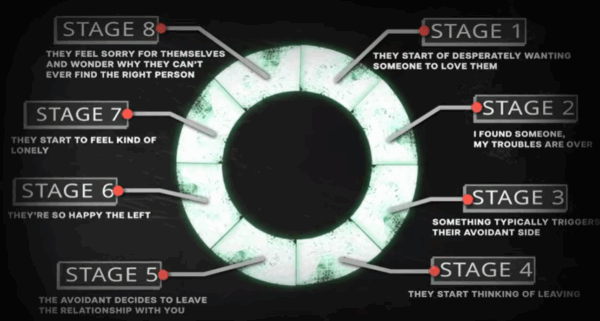
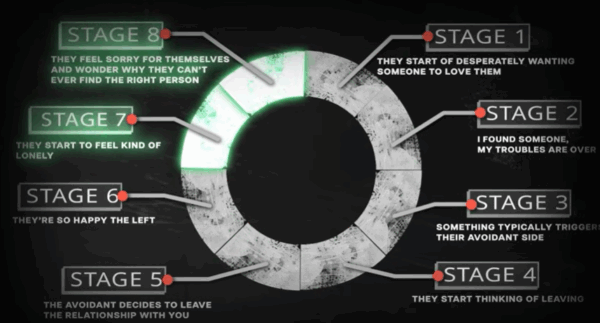
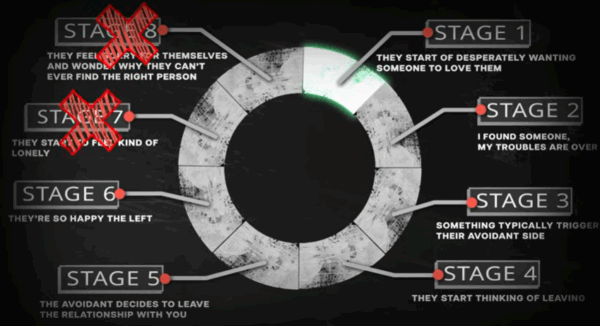
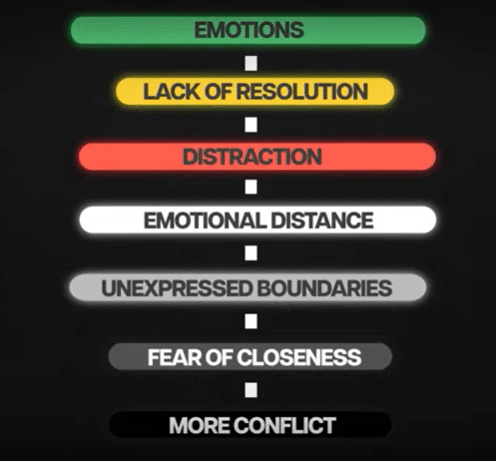


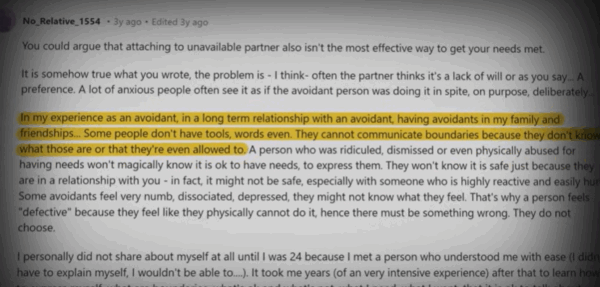

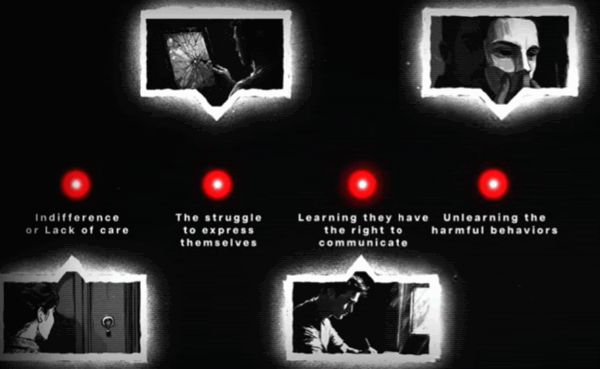

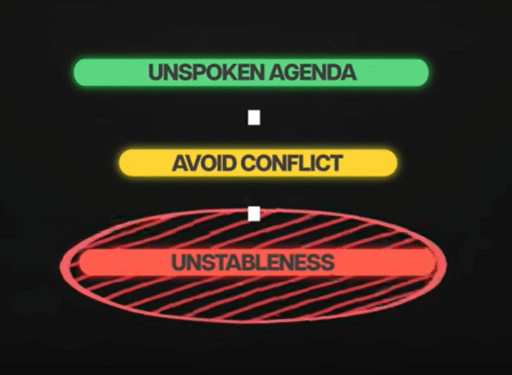
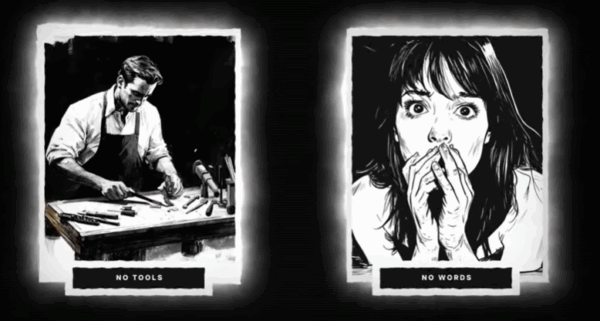

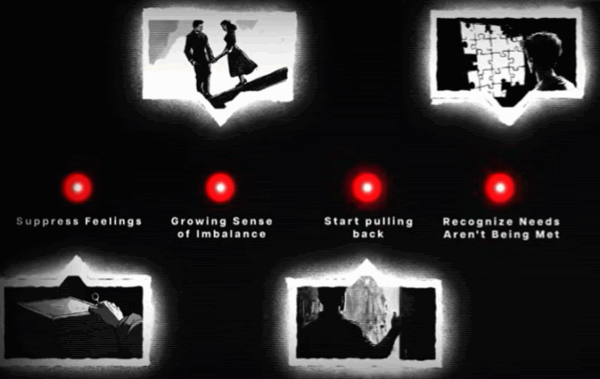
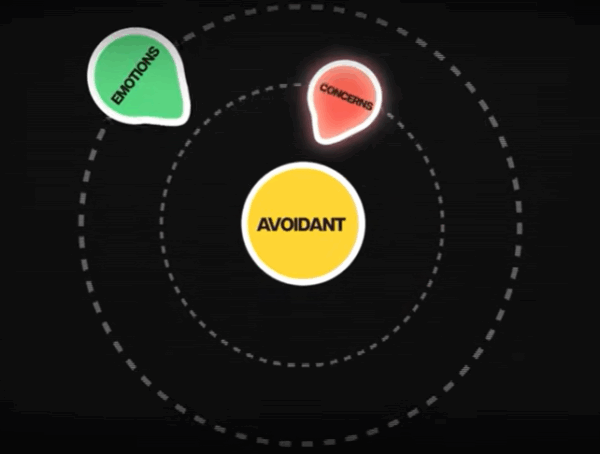
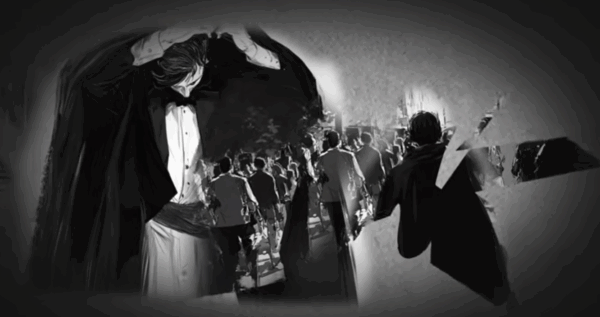
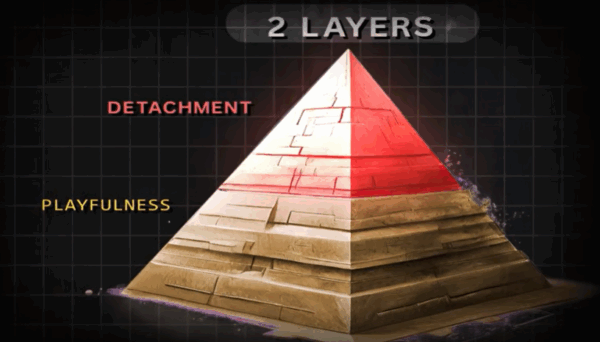
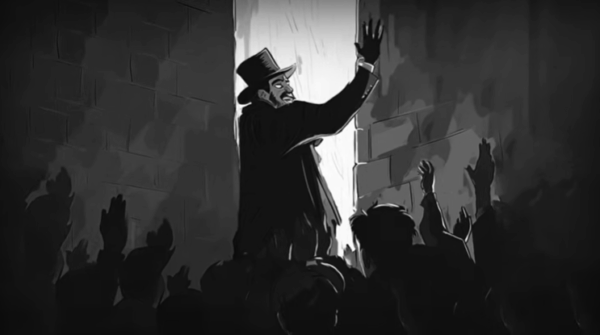
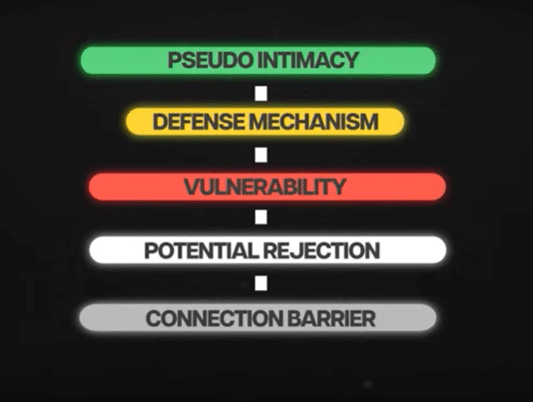
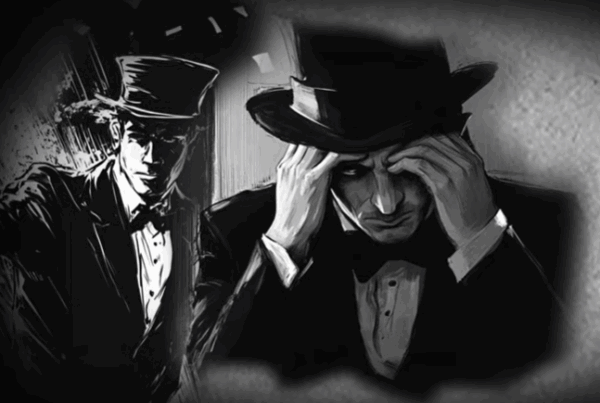

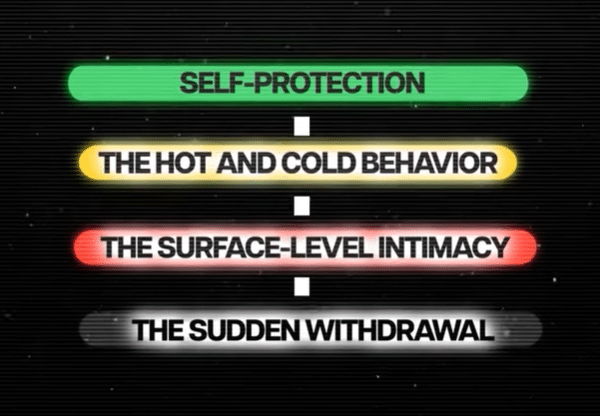
A
July 30, 2025 at 9:32 pm
Such a sad dynamic.